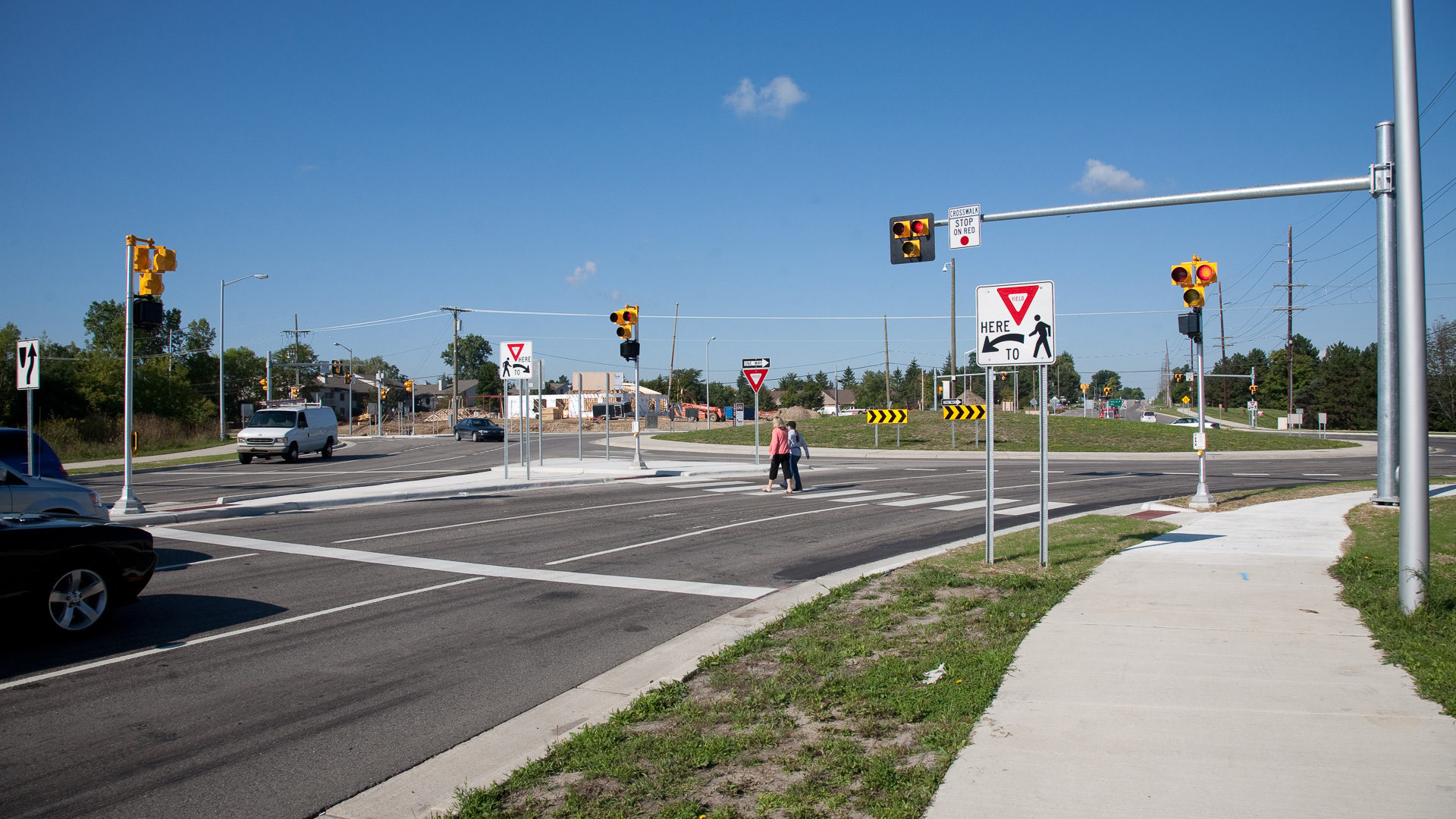Challenge
Pedestrian safety is a top priority when considering any intersection, no matter the size. Leading Pedestrian Intervals (LPI) can reduce crashes by 13 percent. The Florida Department of Transportation (FDOT) wanted to implement more at intersections, but district offices first had to understand how implementing LPIs would impact traffic delay, queues, and progression on corridors.
Solution
Kittelson developed over a dozen microscopic simulation models with VISSIM software to explore operational impacts of Leading Pedestrian Intervals without disrupting real-life traffic. The software simulated vehicle and pedestrian behavior, and Intelight MaxTime SIL was used to model the signal controllers. We also studied the impacts of omitting the permissive portion of protected/permitted left turns. In total, we developed 16 treatment models to illustrate various stages of LPI and protected/permitted left turns.
The Outcome
Simulating the Benefits of Leading Pedestrian Intervals
We found that LPIs can be implemented with minor to no additional vehicular delays. Our simulations showed that under low pedestrian volumes, vehicular traffic sees practically no change in operations, meaning that vehicles can continue to progress through the corridor while pedestrians obtain the safety benefit of the LPI. Under moderate pedestrian volumes, some additional delay and queues are experienced, but the safety benefit generally outweighs these increases. We also developed a computer-based training that shares our results as well as trains FDOT staff on the key operational design considerations when implementing an LPI.



